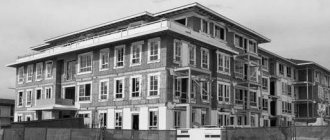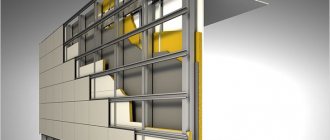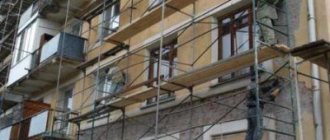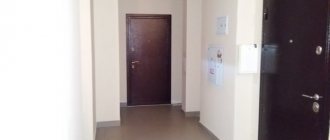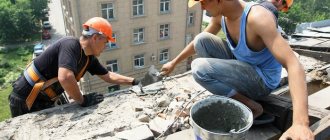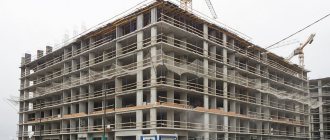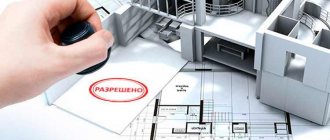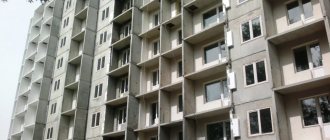Classification of building types
With the course of history, the types of buildings are constantly changing; in addition to the main ones, there are also transitional forms. The primary typological classification identifies the following main groups of buildings and structures:
- public buildings;
- residential buildings;
- industrial buildings, structures (including dams, bridges, highways);
- agricultural buildings.
This classification is built in accordance with the main types of activity: everyday life, work, social life. According to construction requirements and standards, four capital classes are distinguished: with increased requirements, mass construction, low-rise buildings, buildings that meet minimum requirements. They are determined by performance characteristics, urban planning significance, building materials, and structures. There are classifications according to purpose, number of floors (three degrees), durability, fire resistance (five degrees).
Residential buildings using construction technology - varieties
From a practical point of view, home buyers are most interested in the types of residential buildings based on construction technology - architectural expressiveness, performance characteristics, comfort, durability, and apartment layout depend on this.
According to this classification, residential buildings are divided into:
- brick;
- monolithic;
- prefabricated-monolithic (monolithic-brick, monolithic-panel, monolithic-frame);
- houses with a metal frame;
- block;
- panel.
Among these categories, prefabricated house construction prevails, in which most structures are manufactured in a factory, and the construction itself is reduced to the installation of structural elements.
Brick-monolithic
A very common type of new buildings lately. Unlike monolithic houses, only the frame is reinforced concrete, the internal partitions are made of ceramic blocks, and the external walls are made of bricks. This type of construction provides the structure with high strength, capable of withstanding even an earthquake. The level of sound and thermal insulation is about a third better than in monolithic buildings. It turns out that this type of house combines all the advantages of monolithic and brick buildings.
Are brick houses the best?
Brick houses have durability, high strength, and the ability to withstand atmospheric, seismic, and biological hazards. Traditional technologies have been proven over the years. The designs of brick residential buildings allow the use of convenient apartment layouts and the construction of large premises.
The main disadvantage of brick construction is the high share of manual labor, which leads to the highest cost among all types of construction. Other disadvantages of brick as a building material are its heaviness and high thermal conductivity, which forces them to increase the thickness of the walls for good heat retention. Of the typical brick series, the most famous is the Moscow series “Towers” (Tishinskaya, Moskvoretskaya, Smirnovskaya). Buildings with 12 and 14 floors are distinguished by high ceilings, separate bathrooms, and are recognized as the highest quality for the 70s.
High-rise construction (over 16 floors) made of brick is considered unprofitable; construction standards for wall thickness (2.5 bricks) do not meet modern thermal criteria. Therefore, the construction of brick houses is used mainly in suburban low-rise housing construction.
Frame-monolithic structures for high-rise buildings
It is not recommended to build houses with a height of more than 10 floors with brick, since its strength may not withstand such a load. Therefore, for the construction of multi-storey buildings of 20 or more floors, frame-monolithic structures are chosen. First, a reinforced concrete monolithic frame with strong reinforcement is poured, followed by the installation of external enclosing structures and internal partitions. The comfort of living in such a house depends on the choice of materials for performing these works. The material of external walls and internal partitions affects not only the strength of enclosing structures, but also sound insulation and thermodynamic processes.
Experts explain that the filler plays an important role, thanks to which the desired indicators are achieved. But these structures have a weak point: the junction of the filler with the frame. Due to the different coefficients of thermal expansion of these materials, cracks may occur.
But if the developer is honest and adheres to technology, uses high-quality materials to build a house, then monolithic frame structures are no less durable than brick ones. They are even built in seismic zones. This technology is mainly used for houses above 10 floors during the construction of new buildings in Minsk and other large cities.
Monolithic and prefabricated monolithic housing construction: pros and cons
There are very few monolithic residential buildings in their pure form. There are practically no standard series; all existing buildings were erected according to individual projects. The technology of monolithic reinforced concrete is well known - formwork is installed along the contours of future walls, floors, and load-bearing structures. They assemble a reinforcement frame, which is filled with factory-prepared concrete. The formwork elements are dismantled after the concrete has hardened.
At the same time, work with formwork takes up over 50% of working time and labor costs. Other disadvantages of monolithic construction are a significant proportion of manual labor, work performed directly on the construction site in the open air, dependence on the weather, and the need to care for concrete at low temperatures.
The main advantages of monolithic housing construction relate to the construction of public buildings. Creating free layouts, constructing large spans, continuous spatial systems, the possibility of any curvilinear forms are very good for unique architecture, and are not typical for mass residential construction.
The absence of seams, problems with sealing joints, improved thermal performance - all these are the undeniable advantages of a monolithic house.
Therefore, monolithic technologies are still used in foundation work, construction of underground parts of buildings, and are recognized as effective for combined structural systems and monolithic frames. Monolithic construction is a priority for seismic areas.
Advantages of monolithic houses:
- Highest strength. If the frame of a monolithic house is poured with high quality, such a house will last for a very long time (a hundred years or more). Earthquake-resistant foundations allow such houses to be the most reliable in areas with a high risk of earthquakes;
- A monolithic house does not shrink, which facilitates and speeds up the foundation construction process;
- The ability to move as far as possible from standard layout options;
- You can start renovations immediately after purchasing an apartment, since there is no shrinkage;
- Relatively high construction speed - 1-2 years;
- The number of floors can be very large, as eloquently demonstrated by super-tall skyscrapers;
- Less weight compared to brick houses.
Minuses:
- In some cases, additional heat and sound insulation is required;
- Redevelopment is very difficult;
- The impossibility of full-fledged work in winter, as well as high demands on the quality of pouring and compacting concrete.
Shotcrete buildings
Intermediate between monolithic and monolithic-panel types of residential buildings have become buildings made of shotcrete concrete, in which the walls are made by wet shotcrete (under pressure). With this method of concreting, a reinforced polystyrene foam panel (the same basalt insulation) appears inside the wall. Insulated concrete is more durable and denser than conventional concrete. The technology is simple, used in many countries, and helps reduce heating costs. Planning flexibility increases, as in buildings with curtain panels for external walls. The flexibility of the technology allows the molding of curved panels, various sections, and wall configurations. The weight of the house is reduced.
Blocky
The main difference between this type of house is that the load-bearing walls are made of concrete blocks and are assembled like a construction kit. The block type of houses is easy to confuse with the panel type. The walls in both cases are made of concrete. The difference is that block walls consist of several elements, while panel walls are a single reinforced structure. A significant drawback of such a house is uneven ceilings. The plaster is cracking between the blocks and showing the seams between the slabs in all their glory. Another feature of such houses is the “paired” window frames, the frames of which are tightly held together by a screw connection. Redevelopment of an apartment in such houses is possible without any problems: dismantling partitions, widening doorways or combining a bathroom.
Characteristics of monolithic brick buildings
In terms of cost and comfort, monolithic brick residential buildings are classified as business class. A production method in which the walls of a monolithic frame are filled with brickwork improves the quality of construction. When laying by hand, there are practically no joints between the frame and the filling of the wall planes. Brick finish on exterior surfaces improves aesthetics. With this method, internal brick walls become load-bearing elements of a single frame, and the level of thermal insulation increases by up to 40%. Monolithic-brick housing was practically never built in mass series; now it is being built according to individual projects.
Monolithic panel houses are distinguished by filling the monolithic frame with factory-made panels that match the size of the external wall of the room.
New buildings types of houses
New buildings include residential apartment buildings that have been built since the early 90s. Despite the fact that they are favorably distinguished from Stalin buildings by modern communications, and from Khrushchev and Brezhnevka buildings by the size of their apartments, new buildings have their own problems. Moreover, developers are trying to add individuality to modern standard houses by experimenting with layouts and materials - there are both successful experiments and not so much. There are so many series of new buildings that reading the descriptions of each will be tiring. Therefore, we will divide them into two groups and describe the common features and differences from the old buildings.
Monolithic frame and monolithic houses: what is the difference?
In practice, monolithic frame houses differ little from monolithic ones. According to monolithic frame technology, the supporting and load-bearing elements of the building are walls; columns are not used as the main load-bearing element. The main application is individual projects of luxury residential complexes.
Despite the obvious advantages of all types of prefabricated monolithic buildings (strength, thermal insulation, durability), disadvantages associated with design defects and poor-quality construction are revealed. Light partitions reduce sound insulation, the layout is not always convenient, and the ventilation systems are incomplete.
Main types of multi-storey residential buildings
The first factor, of course, is the type of building material: brick, panel (foam block) and monolithic. Here it is necessary to understand that completely monolithic houses are extremely rare. They usually contain sand-lime brick and other materials for wall decoration. Panel construction has been known to all of us since the times of the USSR. Most people are aware of the disadvantages of this type of building, since the majority of those reading this article live in such buildings. Brick also has its advantages and disadvantages
When asked which multi-storey buildings are the best, we can say unequivocally - these are monolithic. Especially when it comes to an earthquake-prone region. However, let's talk in more detail about the pros and cons of each direction.
Metal frame houses
Metal frames made from profile pipes are considered the latest achievement in construction technology. The world's tallest buildings and industrial structures are built using this method. In domestic mass construction, the technology is used little, mainly in low-rise housing construction.
The main advantages of metal frames are short installation times, low metal consumption (comparable to the consumption of reinforcement), and the ability to fill walls with any materials (including lightweight blocks, heat insulators, sandwich panels). Critical disadvantages for domestic mass construction are the high cost of profiled pipes and insufficient development of technology.
Pre-revolutionary housing
So. Let's start with the oldest representative of this area - apartment buildings of pre-revolutionary construction, popularly called "royal" buildings. Nowadays they are found mainly in historical areas of large cities. Mostly preserved as cultural heritage monuments, which are subject to specialized care and maintenance. Maintaining the proper condition of old-fashioned residential buildings costs quite a lot of money. During the formation of the USSR, almost all such houses were nationalized, and the apartments in them were converted into communal housing. The leaders in the number of such houses are Moscow and St. Petersburg. Among the advantages of the design features, we note the presence of wide entrances with a main exit, high ceilings of more than 3 meters, massive walls, mainly made of brick. The rooms in the royal apartments are isolated. The disadvantages of such housing are unsatisfactory engineering communications that do not meet modern requirements, as well as fire-hazardous wooden floors.
Block houses
A building block differs from a panel in its dimensions and installation features. Factory-made prefabricated structural elements are more often used in individual suburban and dacha construction. The main disadvantage of well-known block houses is the poor execution of installation joints. It results in uneven wall surfaces, poor quality plaster, and uneven ceilings.
In modern designs, block-panel houses are more often built, alternating volumetric blocks in the wall construction and panels between them. The use of lightweight concrete (expanded clay concrete blocks, wood concrete) in mass construction has not yet found application.
Panel houses
The most numerous houses in the post-Soviet space were built because of their low cost, as well as the high speed of construction. However, such buildings have a whole list of disadvantages. But first things first.
Advantages of panel apartment buildings:
- High construction speed - up to a year;
- Lowest price per square meter;
Flaws:
- Seismic resistance is higher than that of brick, but lower than that of monolithic structures;
- Typical apartment layout;
- Short service life - up to 80 years;
- “Noisy” neighbors, since the sound insulation in such houses is mediocre. The same can be said about thermal insulation qualities;
- Uneven ceilings and walls, especially in older houses;
- Not higher than 25 floors;
- Fungus is most common in such buildings.
https://www.youtube.com/watch?v=N9hhmXp-y2Y
Panel housing construction
Typical examples of a panel house include a building structure entirely composed of large-sized, flat, factory-made elements (panels). Panel elements are installed directly on the construction site. Panel housing construction is the most popular technology for prefabricated housing. Standard designs, manufacturability of factory production, high speed of installation - significantly reduce the cost of construction. The main disadvantage of panel structures is the standardization of layouts, the difficulty of remodeling an apartment tied to load-bearing walls due to their rigidity. There are large-panel residential buildings, in which the size of the panels is tied to the size of the room.
The load-bearing capacity of the walls is ensured by wall panels (one floor high). Such a panel is not self-stable - stability and operational strength are ensured by the design of joints, connections, and welding joints. Floors are also made from prefabricated reinforced concrete panels, decking, and floor slabs.
External wall panels perform heat-shielding functions, while internal panels combine load-bearing and sound-proofing roles. Panel houses make up the vast majority of the existing housing stock.
According to consumer reviews, the best panel series are:
- 121 “Gatchinskaya” (rational layout, good lighting, heat conservation);
- I-700 (22-storey tower-type buildings, all rooms are insulated, three-layer external walls);
- RD-90 (three-layer external walls, rounded corner rooms, favorable appearance);
- GMS-3 (individual apartment layouts, brick, porcelain stoneware facades, additional layers of insulation);
- P-44 (mass series, good insulation, layout);
- 1.090.1 (interfloor sound insulation, large bathrooms, two bathrooms in three-room apartments);
- 600.11 (large entrance hall, many storage rooms, triple glazing);
- 606 (large kitchen, convenient layout, interfloor, inter-apartment sound insulation, parquet floors);
- new 137 (large kitchen, transverse bathroom, parquet, large utility rooms).
New technologies are being applied to the development of well-known structures, for example, seamless finishing of facades. Wall panels of licensed technologies are lined with heat-insulating material and several layers of base, decorative plaster. This eliminates through seams. For many homes, three-layer, two-step panels are supplied.
General Features
The first difference from old houses that catches your eye is the number of floors. New buildings have a height of 17 to 25 floors. Originality is the second point: interesting architectural solutions, attic floors, combined houses and houses of variable number of floors appear.
Apartments in new buildings are more spacious and are often equipped with loggias. Bay windows and additional bathrooms in multi-room apartments have become common. The sizes of the rooms and kitchens, the height of the ceilings are comfortable for living. Two elevators are required to be installed in the entrances, one of which is freight, although this innovation appeared in the late panel buildings of the 70s–90s. The materials from which modern houses are made are of higher quality and environmentally friendly.
Entire areas of new development are appearing closer to the outskirts of large cities, but closer to the center, high-rise buildings are rising mainly on sites vacated after the demolition of Khrushchev-era buildings.
Stalinka
Time passed, progress did not stand still, and bourgeois architecture was replaced by a new direction, solid and powerful, like the USSR itself. The name of the new style was chosen in honor of the father of nations: Stalin . Such housing was built in the period from the 30s to the 60s of the last century. Among the external distinctive features, Stalin buildings are distinguished by their exterior and scope. This style is also called the Stalinist Empire style. These are impressive brick buildings with reliable wooden or, more often, reinforced concrete floors, wide flights of stairs, and good apartment layouts. The height of the ceilings and the comfortably laid out quiet shady courtyards deserve special attention.
Stages of construction of a residential apartment building
The stages of construction depend on the type of apartment building, but there is a general scheme. The process of constructing buildings is divided into the following stages:
- Stage of site preparation for development. Workers are fencing the area and clearing unnecessary buildings. Temporary utilities and roads are being laid.
- Marking the axes of the future high-rise building. Thoroughness, with special attention, carry out the necessary calculations and apply markings using high-precision devices.
- Excavation is carried out. Before starting to build the foundation, a pit is dug under it, and trenches are laid for communications.
- Foundation work is being carried out. The stage is of great importance - the durability of the building depends on it.
- The outer walls of the building are being erected.
- Supplies communications into the building.
- Installing the roof.
- Install windows.
- Conduct internal communication networks.
- Screed floors.
- Carrying out interior finishing work.
- Carrying out external finishing work on the building.
Modern new buildings
There is another type of house that originated at the turn of the century - new buildings. Such houses are usually built from brick and monolithic concrete. They are higher in class than sockets. They are characterized by fairly progressive layouts, spacious kitchens and isolated rooms. The ceiling height in such houses can reach up to 3 meters. They have acceptable noise insulation and are quite earthquake-resistant, as they were designed according to modern SNiPs and rules. Of the minuses, we note: high initial cost, possible lack of developed infrastructure in the area
